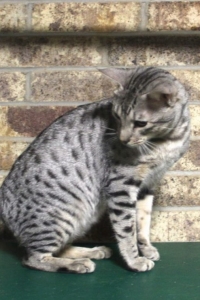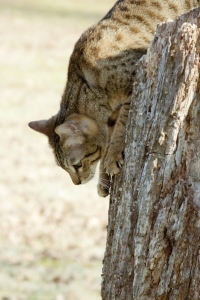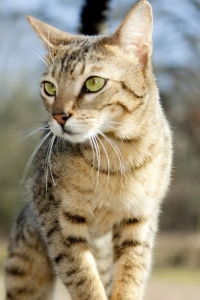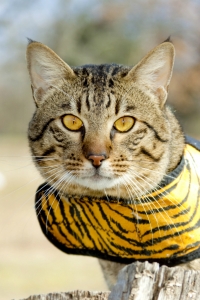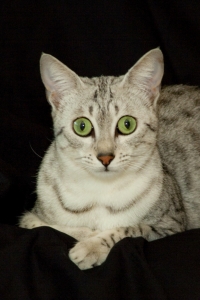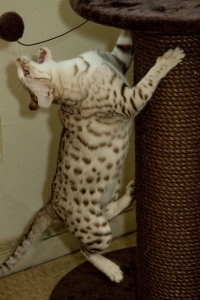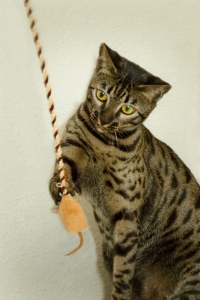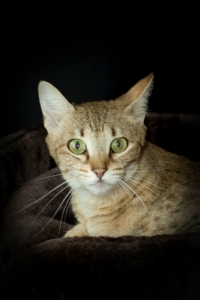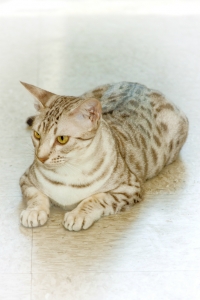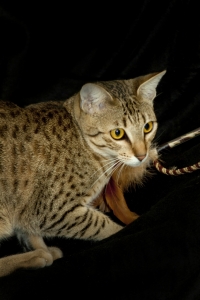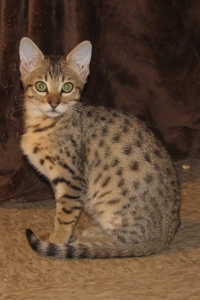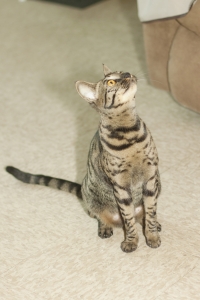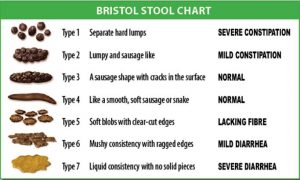
The last thing you want to see or examine is Cat Poop. Parents love their pet children. It’s instinctive to concerned about their health. A wise pet parent will forego the yech and will frequently examine the texture, color, content, and consistency while noting bathroom habits. These are keys to early detection of health issues.
Litter Box Language is a tale-tale of digestive issues, infections, parasites, and possible disease. Your cat’s poop texture, content, consistency is an overview cat health with some exceptions. When examining the cat’s poop what should be noticed. Let’s begin with the overview of the feces textures. For this blog, I will stay with 4 textures. Although within each there is variants for the texture, content, consistency and color. All are important and necessary keys to possible identifying the health specifics.
- Dark Brown Tootsie roller-shaped poop (Figure 2) – These are considered normal and healthy bowel movements an ideal stool. Not too hard or too soft, slightly moist, well-formed with a consistency similar to dough. It’s easy to scoop up. An excellent indicator that the cat is free from dietary digestive problems and parasites/protozoans. The best advice is to continue with existing foods, health checkups and preventive measures.
- Hard, dry poop (Figure 1) – These are very common and may indicate constipation and dehydration. This stool has a clearly defined form with visible cracks like hard, dry and crumbly balls. There is very little residue left on the ground once collected. It tends to split apart rather than being crushed. This Poop stays the longest time in the colon. If frequent or persistent occurrence consult with your veterinarian for diagnosis and solution.
- Mushy Poop (Figure 3) – a loose stool with no define form consistency similar to mashed potatoes or cornmeal mush consistency. A possible indicator of mild to significant diarrhea, perhaps from a reaction to a new food, temporary virus, antibiotic medicines, fiber deficiency or medical condition. If this goes on for more than 24 hours, consult your veterinarian.
- Liquidities Poop (Figure 4) – Watery, liquid consistency with no solid pieces an indicator of serious diarrhea. This diarrhea will cause dehydration depletion of beneficial bacteria and rapid weight loss. Nutritional absorption is low. Additionally, the good bacterial balance in the digestive system is reduced or lost. The waterier bigger the risk of the cat life. Time is extremely important delaying or ignoring risk the life of the cat. The cat will probably need fluid therapy. Refer to a veterinarian as soon as possible. Possible causes are worm infestation, consumption of a toxic substance, protozoan and/or parasite infestation like coccidiosis, Giardia, Trichomoniasis, and other protozoans and parasitic, or combination of parasites/protozoan with disease. Occasional acute food allergies, IBS.
Once the texture notation is successfully completed, the next consideration is consistency and an assessment of the poop content. Both are vital for determining “what to do” whether continue the current care & support and/or scheduling health check, slight to major interventions or the most ultimate ASAP veterinarian appointment or immediate Emergency Room Visit. Evaluating cat’s health consistency and content of poop texture is the signature for consideration of interpreting the message the poop language has provided.
- Poop Content – holds or included the amount, proportion, quantity, components of a particular constituent occurring.
- Poop Consistency – The excrement consistency is the degree of conformity (thickness) of the substance, its uniformity, consistency, regularity and liquidity.
The content of poop doesn’t spare of the obvious texture of concern, but is a factor in all droppings. Infection, worms, indication of disease and parasitic may be found in all poop forms. A good reason for regular examination of your cat’s poop.
It’s normal to notice a bit of fur. This furry content is due to the pet child’s love of grooming. When the find is a Rice-like or spaghetti-like strands, they have worms. The more waterier the poop a greater likely parasitic or virus infestation. In a nutshell an immediate remedy is necessary because the worms will endanger the cat’s life. They have a major role in dehydration, weaken the immune system, poorly-nourished absorption while increasing the probability of other life-threatening protozoa and parasitic infestation. Go to a veterinarian for diagnosis and treatment ASAP.
Color is the more informative tool of the content. For accuracy, it is necessary to monitor and record bathroom habits to aid in accurate interpretation/diagnostics. Aside from the exceptions of the herb (grass) consumed, the reaction to a new food, a temporary virus, antibiotics, these will require veterinary intervention with probable tests. When checking for color consideration of feeding color peddle dry food should be factored. See reference # 2.
- Black or Bloody color may be undigested food, bacteria, mucus, and dead cells.
- Green Color could be excessive grass consumed or gall bladder issues
- Orange/Yellow possible biliary or liver issue
- Red Streak is blood in the stool.
- Black & tarry a sign of bleeding in the upper GI track
- Grey & Greasy possible pancreas or biliary issue
- White Spots rice grain like or white most likely tapeworms, roundworms, hookworms
- Bright Red Blood lower GI bleeding, possible constipation, IBD, dietary indiscretion, anal gland disease
- Pale or white stools sign of liver problems
- Yellow Stool parasitic and/or protozoan infection Giardia with consideration of gallbladder or liver disease
Please understand feeding poor quality food contributes likewise to poop texture, color, content, and consistency rendering false litter box language. These foods can vary tremendously in quality and nutritional value. Most lack fiber or have too much fiber worse yet contain none digestible fillers. Simply changing to qualify food will fix some health issues.
Kindly consider when you visit the vet the advice to list the symptoms and observation behavior/reaction without hinting at the idea of what. It is ill-advised to suggest a diagnostic idea. Although most veterinarians would not avail themselves of the opportunity, whether accurate or not this could be the what diagnoses.
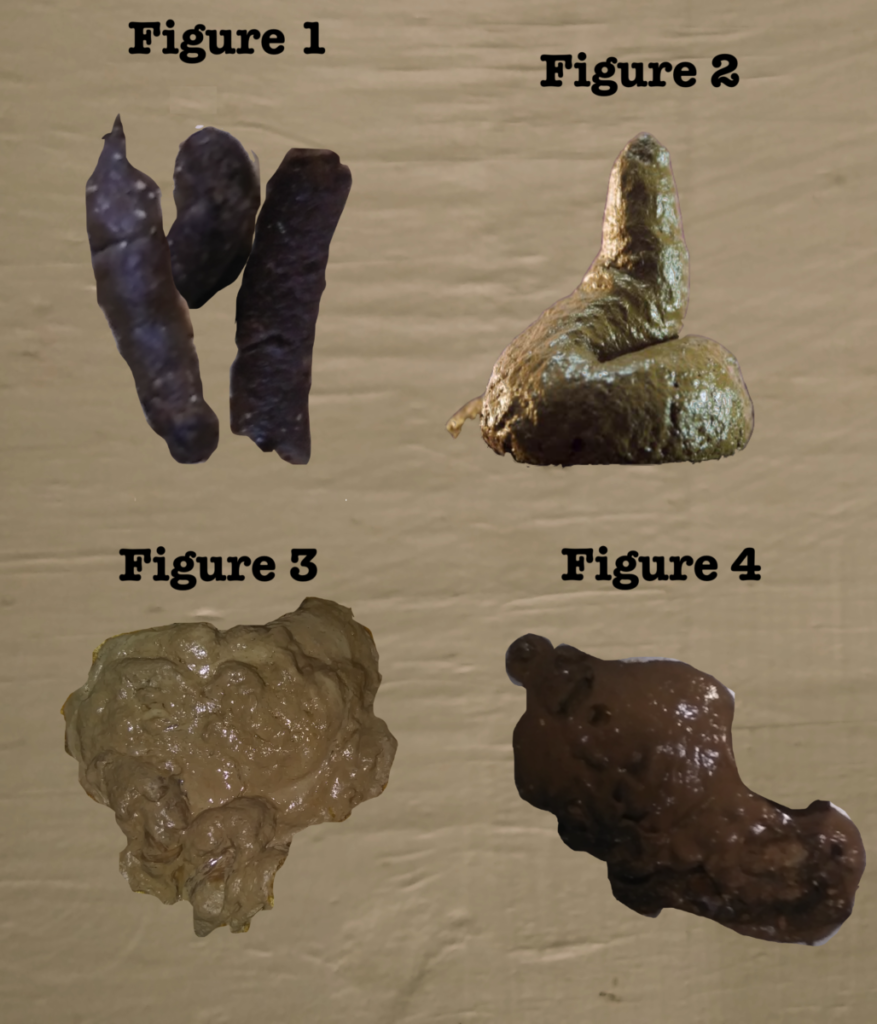
References:
https://kibblequeen.com/wp-content/uploads/2020/02/Royal-Canin-GI-Fecal-Charts_Cat_English.pdf
https://www.royalcanin.com/us/cats/health-and-wellbeing/what-is-your-cats-poop-telling-you

